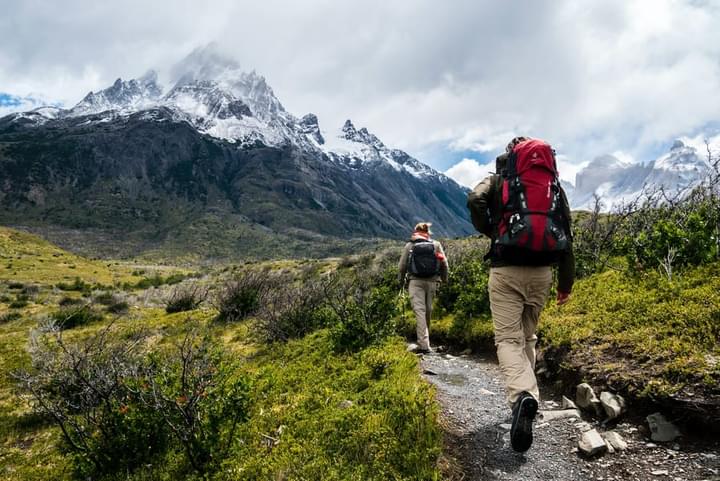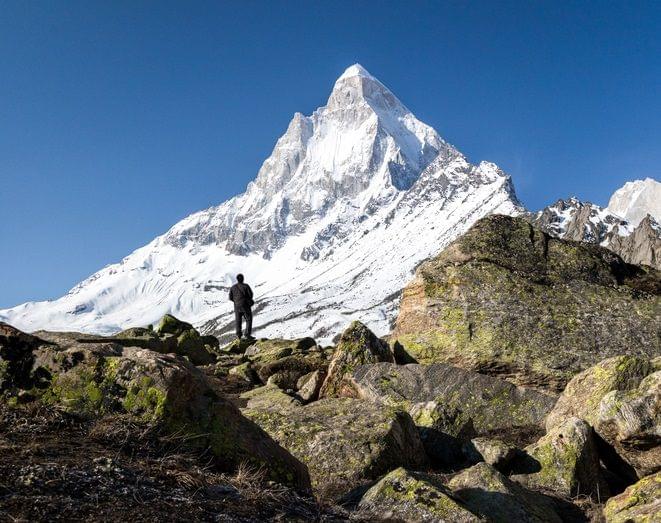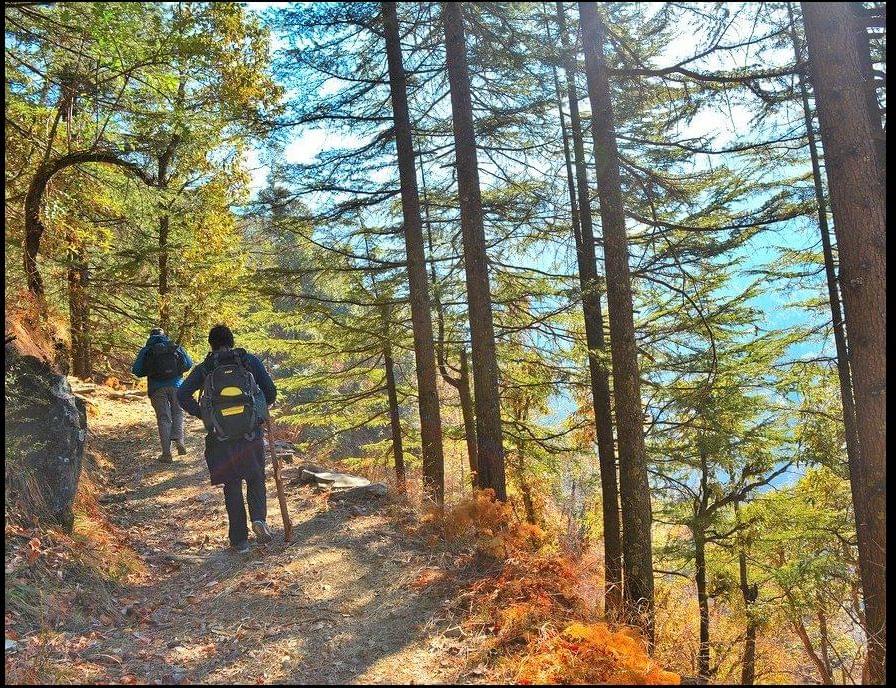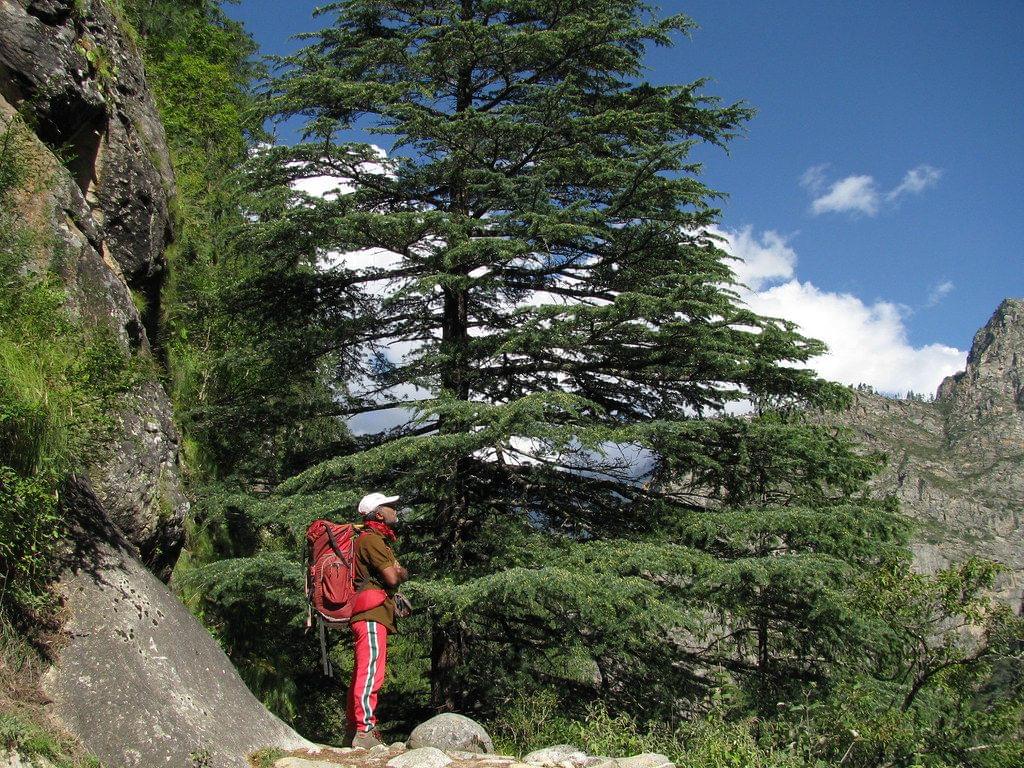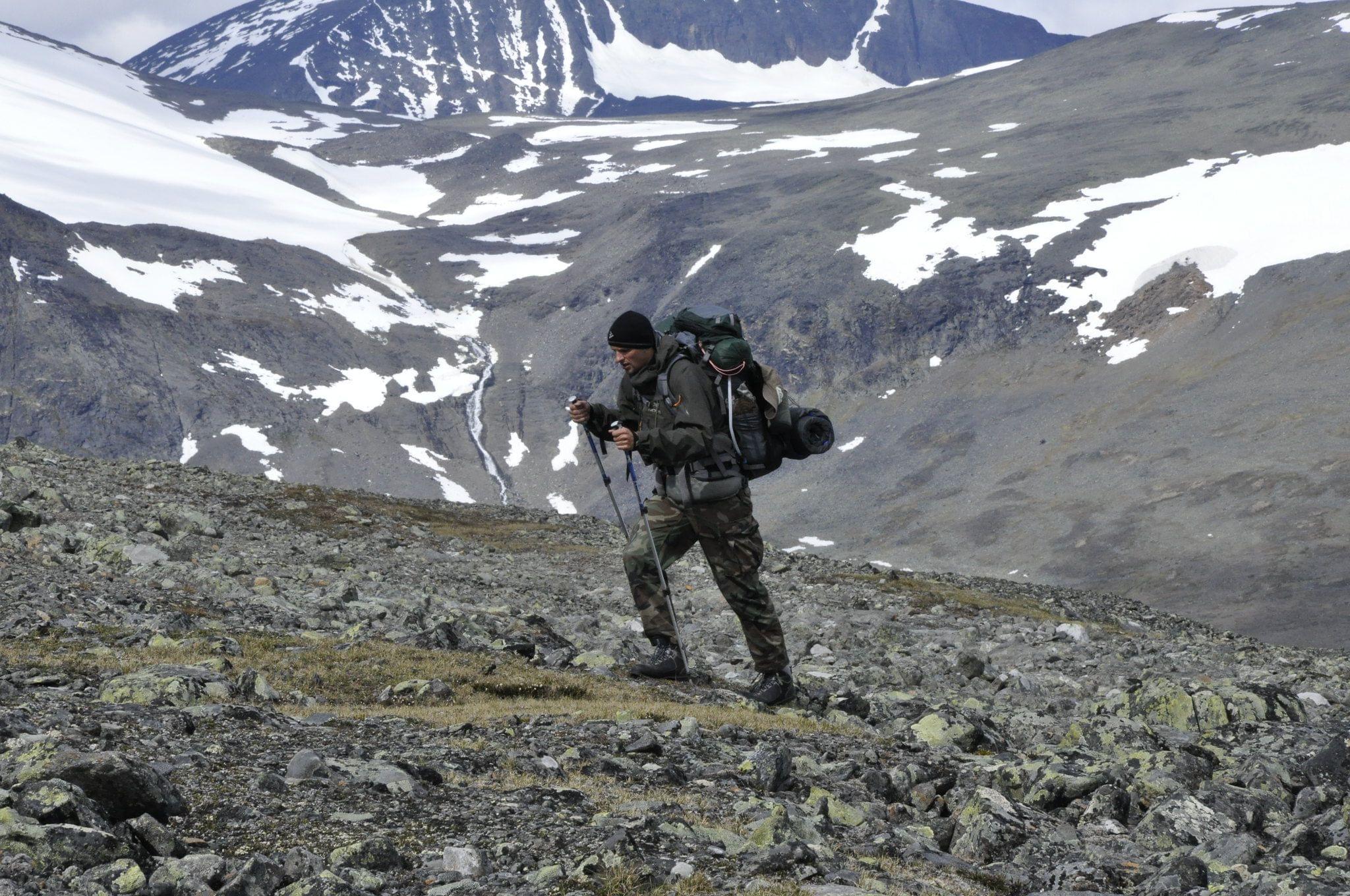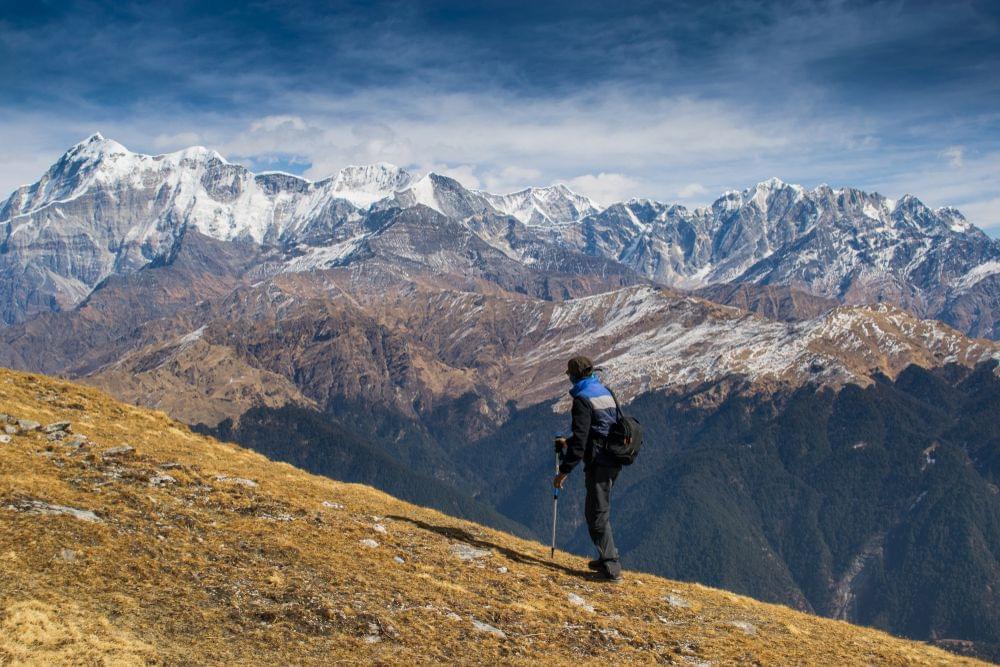Gaumukh Tapovan Trek Overview
Quick Facts of Gaumukh Tapovan Trek
Maximum Altitude – The maximum altitude is around 14222 meters
Grade – Moderate to Difficult
Duration – The duration lasts for almost 8 days
Trekking distance – The trekking distance is approximately 46 kilometers the entire trek
Trail type – Round Trail, i.e., the trekking starts from Gangotri and also ends in Gangotri
Railhead – The nearest Railhead is Dehradun, Haridwar
Airport – The nearest airport is Jolly Grant Airport, Dehradun, Uttarakhand
Snow Season – Mid-December to Mid-June
Service from – Dehradun to Dehradun
Base camp – Gangotri
Best season – May, June, Mid August to October
Region – Uttarakhand, India
Who can participate – Above 15 years, Have at least one experience of trekking in high altitudes above 12,000 ft.
Short Itinerary for Gaumukh Tapovan Trek
Gaumukh Tapovan Trek Detailed Itinerary
Dehradun to Gangotri Drive.
It is a 7/8 hours drive covering a distance of almost 242 km.
From Dehradun we drive to Gangnani via Uttarkashi.
Gangnani is famous for its natural hot water baths.
Drive to Gangotri on this day itself.
Stay overnight in a guest house.
Trek from Gangotri (3,048 m) to Chirbasa (3,600 m).
It is a 9 kms hike in 6 hours.
Today, in the morning, after breakfast, we start our trek from Gangotri to Chirbasa (3,650 m).
The whole trek will lead you through dense forests and you will camp on the bank of a beautiful river.
From Gangotri, we hike on the beaten path to Chirbasa, which is located at a tree line.
The whole of today's trek is along the roaring Bhagirathi River.
You can witness the magnificent sunset over the Bhagirathi group of peaks.
After dinner, enjoy a relaxing stay at the camp.
Spend some time observing the awestruck place surrounded by wonderful towers of Himalayan peaks and tranquil greenery.
Trek from Chirbasa to Bhojbasa.
It is a 5 km walk in 3-4 hours.
After breakfast, start your trekking from the river of the Ganges.
Beyond Chirbasa the terrain becomes barren and infertile.
Many hikers even call it Arctic Tundra.
From Chirbasa we continue hiking to Bhojwassa, the whole way leads through dense forest.
In Bhojbasa there is a small temple and a possible campsite near the river.
The afternoon is free for us to explore the area and enjoy the beautiful sunset over the peak group of Bhagirathi.
Explore the breathtaking views of Mount Shivling in Bhojbasa.
You have to spend the overnight in tents.
Trek from Bhojbasa to Gaumukh (3,900 m) to Tapovan (4,335 m).
Enjoy the beautiful panoramic view of the Bhagirathi group of peaks early in the morning.
Post breakfast, we will trek to Gaumukh (3,890 m), the source of the Ganga River.
We explore the area and hike to Tapovan, one of the most beautiful high mountain meadows in the region.
The hike from Gaumukh to Tapovan is steeply uphill, and the higher we get, the clearer the view of the surrounding peaks becomes.
They seem to be only a stone's throw away.
It is also a small question of why sadhus and saints chose this place for continued meditation during the long summer months.
Taking a rest at Tapovan (4,463 m)
This day is for getting accustomed to the place, relaxing, and enjoying the stunning snow-capped peaks, flora, fauna, and mountain scenery.
This land is visited by some of the greatest and most popular mountaineers frequently.
The Shivling peak looms ahead. Behind the Shivling, on the right, is Mount Meru.
A little further to the left of the Shivling is the Sumeru.
The Bhagirathi peaks can be seen further to the left.
Bhagirathi III, Meru (Central Peak), and Sumeru have some of the toughest climbing routes in the world.
We can explore the Meru Glacier and then go back to our campsite.
Trek from Tapovan to Bhojbasa
It is a 5-6 hours trek covering a distance of almost 7 km.
Wake up to the stunning sunrise on the high peaks early in the morning.
Post breakfast we will hike down to Bhojbasa.
The day's destination is Bhojwassa, where you will have plenty of time to explore the breathtaking surroundings and forest trails and relax in an exotic setting.
After dinner, we will set up camp in Bhojwassa.
Trek from Bhojbasa to Gangotri.
It is a 5-6 hours trek covering a distance of around 14 km.
We start descending in the morning to Gangotri after breakfast.
Have Dinner and stay overnight in a guest house/ hotel at Gangotri.
Gangotri to Dehradun drive.
It is a 9-hour drive covering a distance of almost 245 km.
Post breakfast, in the early morning, we drive back to Dehradun and arrive in the evening.
End the six days trek nicely and with many good memories.
What to Pack for Gaumukh Tapovan Trek?
Good trekking shoes, that have good grip, and ankle support, and can handle snow.
You need a 50-60 litre personal bag. Make certain your bag has good hip support, shoulder support, and quick way in pockets.
Wearing levels is the special power in the mountains. Levels give you the greatest protection from all parts.
You will need 1 pair of inner thermals, 2 light wool levels, 1 light sweater, and 1 soft padded jacket.
An outer padded jacket will keep the wind and cold out. Make certain that your padded jacket has a hood as well.
1- 2 pairs of trek pants should be enough for this long, hard journey.
These are documents needed for lawful purposes and the forest department. Without any of these, you will not be allowed to trek.
Original and photocopy of identity card. Anything such as a Driver's License, Aadhar Card, or Passport will do. This is needed by the Forest divisions of an organization for your identification.
Passport-size picture. This is needed to get the trekking permits.
Disclaimer certificate. This is another legal document needed. Download the PDF, read carefully and sign it. This must be handed over to your trek leader during the registration at the base camp.
Medical certificate. There are 2 parts to this. The first part must be filled by a practicing medical expert. The second part must be filled by you. Without the medical certificate, the Forest department will not allow your trekking journey.
General Trivia About Gaumukh Tapovan Trek
The trek is named after the Gaumukh, which is the source of the River Ganges.
The Gaumukh is a glacier that sits at the base of Shivling Mountain.
The entire trek is about 40 kilometers long.
The Gaumukh meadow gets its name from its shape, which resembles that of a cow's head (gau means cow in Hindi).
The Tapovan meadow is known for its natural hot springs, which are said to have medicinal properties.
The Gaumukh Tapovan Trek is located in the Nanda Devi Biosphere Reserve, which is home to a large variety of flora and fauna.
The trek provides stunning views of some of the tallest mountains in the world, including the Nanda Devi (7,816 m), Kamet (7,756 m), and Dunagiri (7,066 m).
The trek takes you to the base camp of the Gaumukh glacier, which is one of the largest glaciers in the world.
The trek is considered to be one of the most difficult treks in the world and is not for the faint of heart.
The trek takes you through some of the most remote and beautiful places in the world. It is an amazing experience and one that you will never forget.
Know Before You Go to Gaumukh Tapovan Trek
Gaumukh Tapovan Trek is one of the most popular treks in India. It is a stunningly beautiful trek that takes you through some of the most stunning landscapes in the country. The Gaumukh Tapovan trek is challenging and should only be attempted by experienced trekkers. Here are some important tips for trekkers attempting the Gaumukh Tapovan Trek:
Make sure you are physically fit and prepared for the trek. The Gaumukh Tapovan Trek is challenging and is not suitable for beginners. It is a difficult trek and requires a lot of endurance. If you are not used to hiking, it is advisable to start training a few months in advance.
Start your trek from Gangotri. Gangotri is the base camp for the Gaumukh Tapovan Trek and is the best starting point for the trek.
Make sure you have all the necessary equipment for the trek. This includes proper hiking boots, a sleeping bag, a first-aid kit, and plenty of food and water.
Hire a qualified guide. A guide can be extremely helpful on the Gaumukh Tapovan Trek, as they will be familiar with the route and can help you navigate the difficult sections.
Be prepared for the altitude. The Gaumukh Tapovan Trek takes place at high altitudes, so be prepared for the decreased oxygen levels. Make sure to acclimatize before attempting the trek.
Make sure to start the trek early in the morning. This is because the weather can get very hot in the afternoon and you do not want to be hiking in the heat.
By Rail:The nearest railway station to Gangotri is Rishikesh, which is 234 km before Gangotri on NH58 and is well connected by a railway network with chief places of India. Trains to Rishikesh are frequent. Taxis and Buses are ready to be used from Rishikesh, Tehri Garhwal, Uttarkashi, and many other places where one is going to Gangotri. From Rishikesh, you can take a local bus or taxi to reach Gaumukha Tapovan. The journey by road takes around 8-9 hours.
By Air:The nearest air-plane station to Gangotri is Jolly Grant Airport, Dehradun which is situated around a distance of 250kms. This air-plane station is well connected to Delhi and there are many daily flights to Delhi which are connected to the chief parts of India.
By Road:Gangotri can be reached only via road in a bus, privately operated jeeps, SUVs/ other vehicles. The journey from Rishikesh takes about 10-12 hours. Taxis/Jeeps are also ready to be used from taxi stations in Rishikesh, Haridwar, and Dehradun. Tourist cabs are ready to be used from Dehradun/Rishikesh. The best way to reach Gaumukha Tapovan is by hiring a taxi or jeep from Rishikesh or Dehradun. The journey takes around 9-10 hours.
- In Summers -
Summer is a popular time for the Gaumukh Tapovan trek, especially for trekkers who enjoy hiking in the snow.
During the summer months, the weather is warm and the skies are clear, providing the ideal conditions for a pleasant and comfortable trek. However, the heat can make the trek more challenging, so be sure to carry plenty of water and sunscreen.
In early summer, snow can be found along the trail. This is also the time when you cross the Bhagirathi River over natural snow bridges. The snow remains until Gaumukh and sometimes even beyond until mid-May.
- In Autumn -
With the transition to autumn, the situation shifts. This is the best season for the Gaumukh-Tapovan trek because then you have an excellent view of the entire valley.
Autumn also brings colors to the trail. The vegetation on the way to Chirbasa turns shades of yellow, brown, and chestnut. The Bhagirathi also turns a deeper shade of blue. Its current is gentler compared to the summers.
- In Winters -
The winter months can see some snowfall at higher altitudes, making the trek more difficult. However, the views are even more stunning with the snow-capped mountains in the background. If you do decide to go during winter, be sure to pack warm clothes and sturdy boots.
The Gaumukh Tapovan Trek route starts from the village of Gaumukh and runs through the Tapovan area. The route is well-marked and there are plenty of places to rest and camp along the way. The trekking route takes approximately eight days to complete.
The Gaumukh Tapovan Trek is a great way to see some of the best scenery that Uttarakhand has to offer. The trekking route takes you through some of the most beautiful landscapes in the country. You will get to see plenty of wildlife along the way, including some rare and endangered species.
The trekking route is also a great way to meet people from all over the world.
Why to Go for Gaumukh Tapovan Trek?
You May Also Book
FAQs of Gaumukh Tapovan Trek
How Difficult is the Gaumukh Tapovan Trek?
On moderately difficult hikes like the Gaumukh Tapovan, you will cover about 8-12 km each day. Hiking to steep climbs and descents is common every day. Here, you have to expect to reach elevations of more than 15,000 feet. There will also be practical portions (e.g. rockfall zones, near vertical sections, glacier walks) that the trek leader will help you overcome.
You should aim to comfortably walk a distance of 5 km in 32 minutes.Your BMI must range from 18.5 to 25 for this trek to remain fit during the entire hike.
Moderate hikes cover about 6-8 km daily. The ascents and descents can be steep. The maximum elevation is between 13,000 feet and 14,000 feet. You will frequently encounter tricky spots (e.g., snow or boulders) that must be walked with some caution. You may also encounter small stream/river crossings.
For strength training, do at least 10 repetitions and 3 sets of squats, planks, push-ups, and lunges.
If you are climbing stairs, take at least 15 floors (20 steps per floor), and do 3 sets again.
Is Gaumukh trek safe?
If you are an experienced trekker, then the Gaumukh trek is safe. The trail is well-marked and there are plenty of other trekkers around, so you will not get lost.However, if you are not used to high altitudes, then this trek may not be for you. Make sure to drink plenty of water and take it slow, especially on the first day.
How do I get permission for Gaumukh Trek?
To get a permit for the Gaumukh Trek, you need to apply through the Garhwal Mandal Vikas Nigam (GMVN). You can apply for a permit online or in person at the GMVN office in Rishikesh.
When applying for a permit, you will need to provide your details, passport details, and details of your trekking itinerary.
What is the temperature of Gaumukh?
Gomukh is a glacier in the Himalayan Mountains and the temperature can vary greatly depending on the time of year and the weather conditions.
In the summer months, the temperature at Gomukh can be quite warm, reaching into the high 15 degrees Celsius (high 80s Fahrenheit). However, it can also be quite cool in the evenings and early mornings, so it is important to pack appropriate clothing.
In the winter, the temperature at Gomukh can drop below freezing, so it is important to have warm clothing and a good sleeping bag. The best time to visit Gomukh is in the spring or autumn when the weather is more stable.
Does snowfall occur in Gangotri?
The climate in Gangotri is generally cold and snowy. The temperature can drop to -5°C (23°F) in the winter months. So, to answer the question, yes, there is snowfall in Gangotri. If you are planning on visiting this town, make sure you pack your warmest and finest clothes to protect you from the cold.
Is Gaumukh trek open now?
Yes, the Gaumukh trek is open now. This popular trekking destination is located in the Garhwal region of Uttarakhand. The Gaumukh glacier is the source of the Bhagirathi river, which is a tributary of the Ganges. The trek to Gaumukh is a challenging one and requires a good level of fitness.
Can we go to Gangotri by car?
Gangotri can be reached only via road in a bus, privately operated jeeps, SUVs/ other vehicles. The journey from Rishikesh takes about 12 hours. Taxis/Jeeps are also ready to be used from taxi stations in Rishikesh, Haridwar, and Dehradun.
Tourist cabs are ready to be used from Dehradun/Rishikesh. The best way to reach Gaumukh Tapovan is by hiring a taxi or jeep from Rishikesh or Dehradun. The journey takes around 8-9 hours.
.png?w=auto&h=400)
